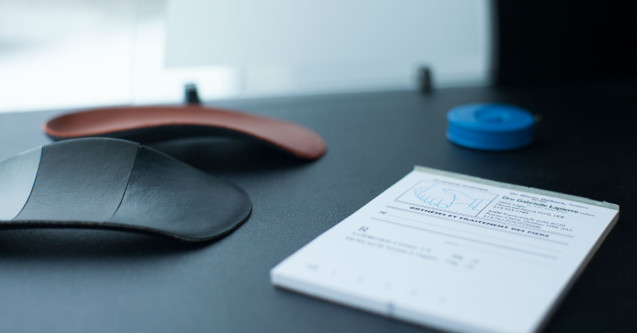5 benefits of wearing foot orthotics
Today we are all concerned with wellness. An orthotic for your feet are one way to ensure foot and leg comfort when standing, walking or exercising. The benefits of wearing orthotics include 1) pain control 2) injury prevention 3) improved sport performance 4) fall prevention for the elderly and 5) prevention and healing of diabetic wounds and ulcers. Continue reading to find out more about these benefits!
1. Controlling pain with the use of foot orthosis
Foot pathologies such as hell spurs, plantar fasciitis, hallux valgus (bunions), flat feet et high-arched feet are all associated with some sort of foot pain. Structural change is at the root of this foot pain. This pain alters the patient’s gait and posture. Podiatric orthotics modify foot structure, ensure optimal control and help maintain normal posture. Proper foot alignment is assured with the use of plantar orthotics and with this proper alignment, pain is controlled.
2. Injury prevention with the use of foot orthotics
Abnormal foot structure or an irregular gait pattern will eventually have negative effects of the lower extremity as well as the back. For instance, flat feet cause hallux valgus (bunions) whereas high-arched feet can worsen heel spurs and hammertoes are associated with corns.
Our feet are major shock-absorbers; they help us support our body weight. If the foot is misaligned or deformed in any way, other structures become responsible for accepting these body weight forces. Our knees, hips and back are traumatized due to this lack of foot shock absorption. Foot orthotics maintain normal alignment and optimize and/or slow down abnormal foot motion thus controlling destructive forces associated with injury.
3. Improved sport performance with the use of foot orthotics
Podiatric insoles can easily improve performance associated with all sports. With a custom-made arch support, foot and lower extremity function are optimized.
With the orthotic’s proper foot alignment as well as its reduction of deforming forces acting on the foot, sports performance is enhanced through efficiency. These deforming forces, transmitted from the ground to the foot or from the bike pedal to the foot are well equilibrated with orthotics. As a result, the muscle energy is concentrated on the movement of the sport and not in controlling outside forces. This leads to better performance.
Furthermore, a well aligned foot is less likely to sprain. Orthotics keep the athlete on the field and out of the clinic!
4. Fall prevention for the elderly.
An accommodative plantar orthosis or a non-rigid podiatric orthotic are frequently the choice to treat older patients. These soft orthotics offer a uniform contact with the ground and thus helps those older patients with stability issues.
The causes of this instability include:
Parkinson’s disease
This neurological disorder affects the patient’s balance.
Dementia
This brain illness affects the patient’s behaviour and decision-making.
Arthritis of the hip, knee and foot
These joint changes alter the gait pattern of these patients due to lack of mobility or pain.
Unintentional medication overdose
The toxicity of medications almost always have an impact on the neurological system of the patient. As a result, the gait of the patient is weakened.
A uniform contact with the ground can help preserve normal articular movement of the foot. With its precise control of foot movement, podiatric orthotics can increase walking confidence in the elderly. These patients feel well-balanced with foot orthotics. The fixed and firm foot position can prevent falls and, as a result, serious injury and hospitalization.
5. Prevention of wounds and ulcers in diabetic patients.
The elevated blood sugar of diabetic patients attacks the immune system. Our ability to fight off foreign organisms is therefore diminished. As a result, diabetic patients are more likely to suffer from foot infections. Furthermore, these patients have a delayed healing process. Foot irritation and inflammation must be avoided.
Plantar orthotics conform to the feet and offer a uniform pressure to the bottom of the feet. This constant and homogeneous control minimizes plantar foot pressure and also decreases the chance to develop friction and blisters. As a result, podiatric orthotics are a necessity for all diabetic patients.
The use of plantar orthotics are important to ensure comfort of the feet as well as the lower extremities. Wellness is assured with the uniform support of podiatric orthotics. These foot orthosis can also control pain and injuries, improve sport performance, prevent falls in the elderly population, and prevent diabetic wounds and ulcers. If you are wondering whether orthotics could help you, consult a podiatrist for a foot examination!


